ASUS Maximus VI Impact Review: ROG and Mini-ITX
by Ian Cutress on November 22, 2013 10:00 AM ESTGaming Benchmarks
While writing this review and inputting the benchmark numbers into my custom database, I came across a significant discrepancy in the gaming benchmark performance of the Impact against other motherboards in three out of four of our gaming tests. In our testing configurations, we saw a 2 FPS dip against other Z87 motherboards. The culprit it seems is Sonic Radar, the new software designed to aid gamers with a visual representation of directional audio. To put this into perspective, this is what I saw in my testing with Metro 2033:
Settings: 1440p, max everything. CPU at stock, XMP enabled, benchmark mode.
With Sonic Radar enabled, 31.00 FPS and the following frame rate graph:
Without Sonic Radar enabled, 33.15 FPS and the following frame rate graph:
Now it is painfully obvious that the FPS graph with Sonic Radar is manic. Regular fluctuations up to 300 FPS are noticeable at this level of gameplay, whereas it was not noticeable in Dirt 3. This is the first generation of Sonic Radar release, and I am conversing with ASUS whether there is something fundamental with Sonic Radar, or my system setup, that is causing this affect. I have put both SR and non-SR numbers in the benchmark results below.
Metro2033
Our first analysis is with the perennial reviewers’ favorite, Metro2033. It occurs in a lot of reviews for a couple of reasons – it has a very easy to use benchmark GUI that anyone can use, and it is often very GPU limited, at least in single GPU mode. Metro2033 is a strenuous DX11 benchmark that can challenge most systems that try to run it at any high-end settings. Developed by 4A Games and released in March 2010, we use the inbuilt DirectX 11 Frontline benchmark to test the hardware at 1440p with full graphical settings. Results are given as the average frame rate from a second batch of 4 runs, as Metro has a tendency to inflate the scores for the first batch by up to 5%.
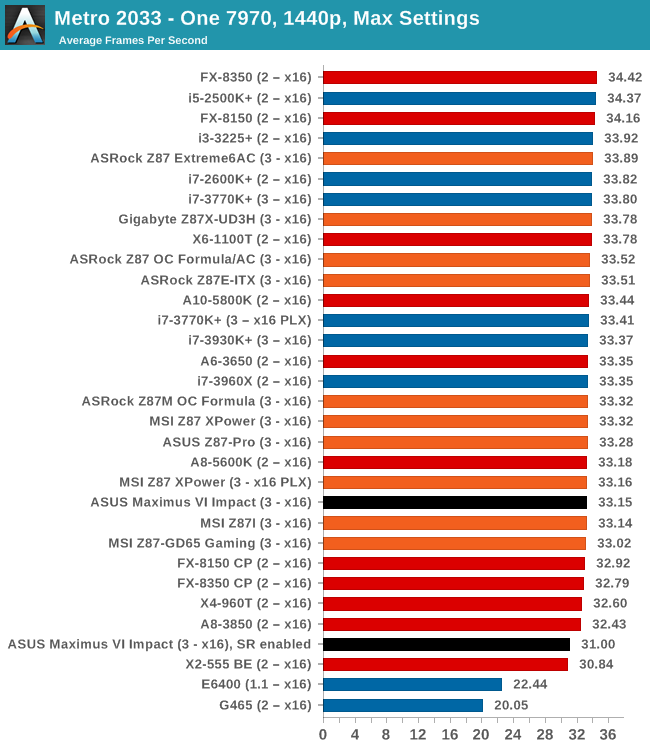
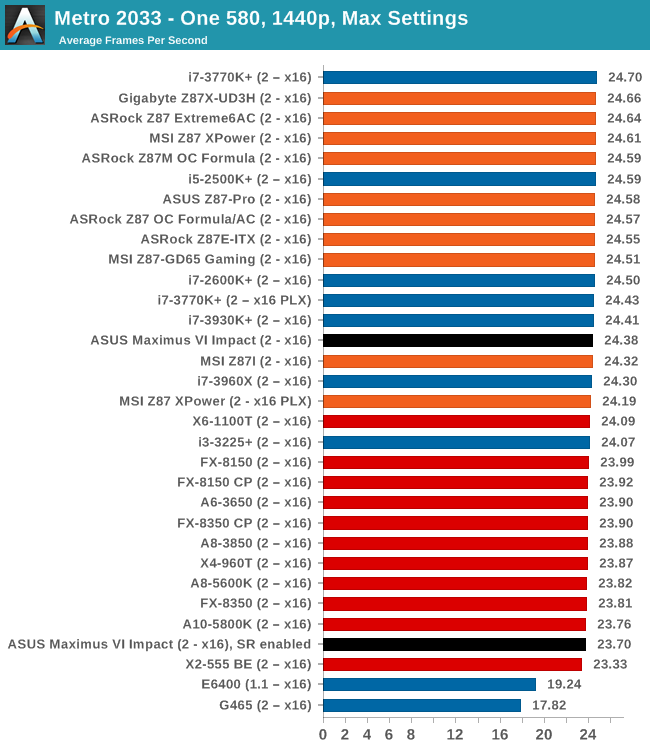
Dirt 3
Dirt 3 is a rallying video game and the third in the Dirt series of the Colin McRae Rally series, developed and published by Codemasters. Dirt 3 also falls under the list of ‘games with a handy benchmark mode’. In previous testing, Dirt 3 has always seemed to love cores, memory, GPUs, PCIe lane bandwidth, everything. The small issue with Dirt 3 is that depending on the benchmark mode tested, the benchmark launcher is not indicative of game play per se, citing numbers higher than actually observed. Despite this, the benchmark mode also includes an element of uncertainty, by actually driving a race, rather than a predetermined sequence of events such as Metro 2033. This in essence should make the benchmark more variable, but we take repeated in order to smooth this out. Using the benchmark mode, Dirt 3 is run at 1440p with Ultra graphical settings. Results are reported as the average frame rate across four runs.
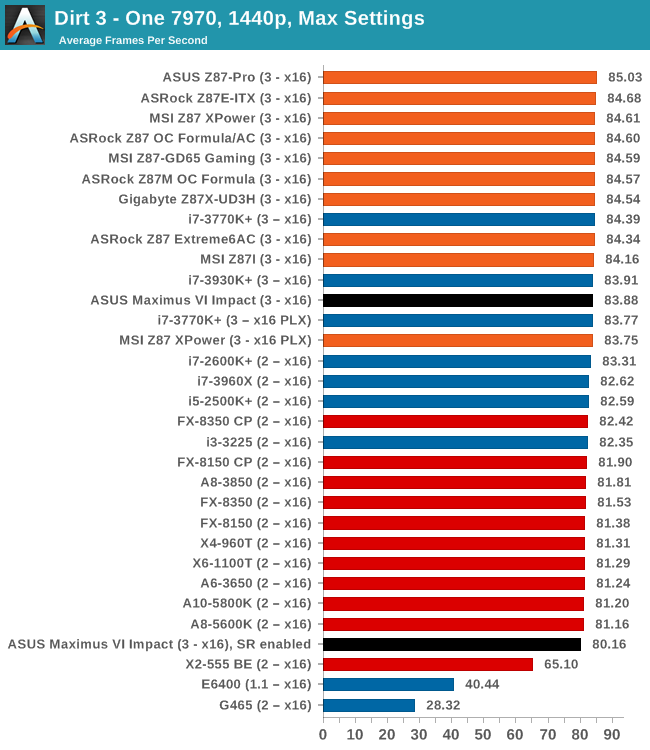
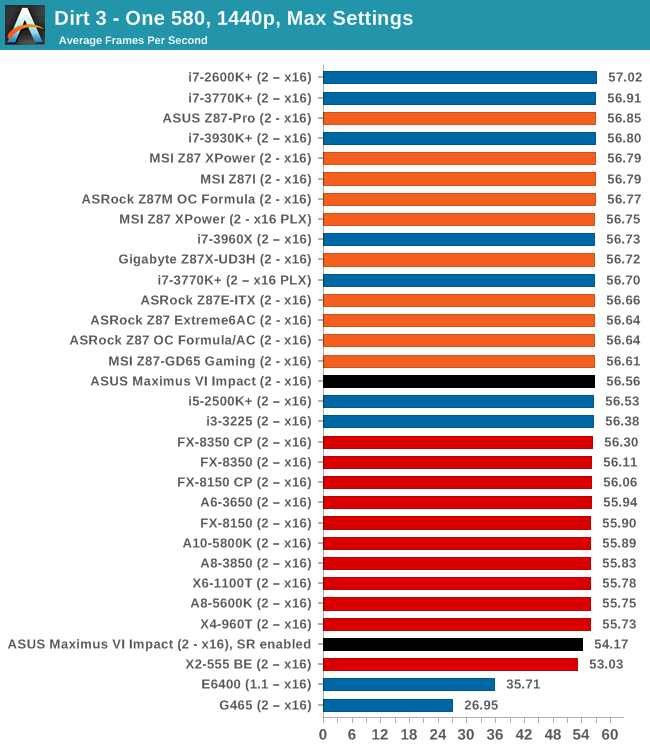
Civilization V
A game that has plagued my testing over the past twelve months is Civilization V. Being on the older 12.3 Catalyst drivers were somewhat of a nightmare, giving no scaling, and as a result I dropped it from my test suite after only a couple of reviews. With the later drivers used for this review, the situation has improved but only slightly, as you will see below. Civilization V seems to run into a scaling bottleneck very early on, and any additional GPU allocation only causes worse performance.
Our Civilization V testing uses Ryan’s GPU benchmark test all wrapped up in a neat batch file. We test at 1080p, and report the average frame rate of a 5 minute test.
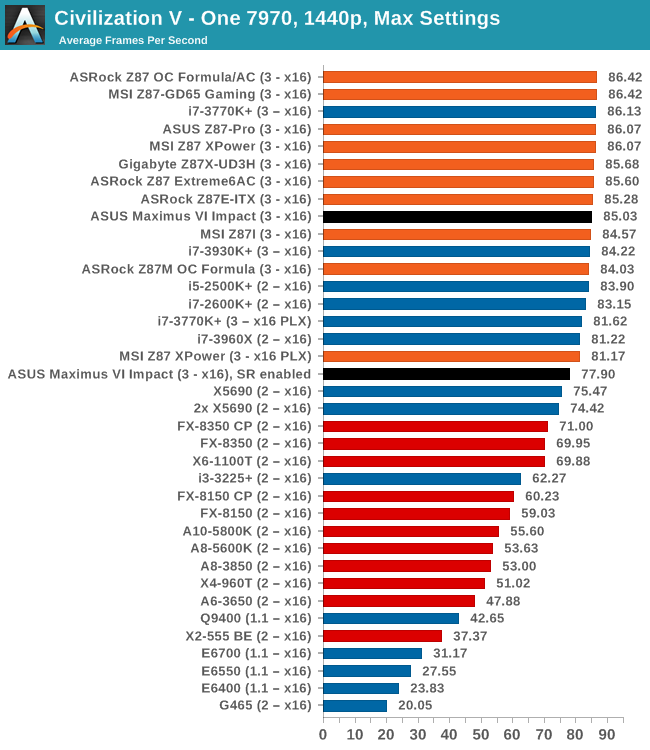
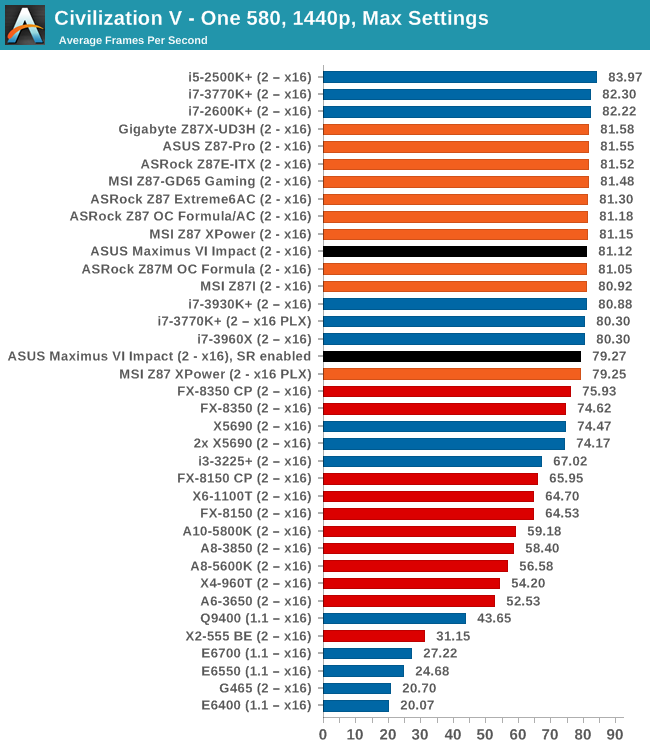
Sleeping Dogs
While not necessarily a game on everybody’s lips, Sleeping Dogs is a strenuous game with a pretty hardcore benchmark that scales well with additional GPU power due to its SSAA implementation. The team over at Adrenaline.com.br is supreme for making an easy to use benchmark GUI, allowing a numpty like me to charge ahead with a set of four 1440p runs with maximum graphical settings.
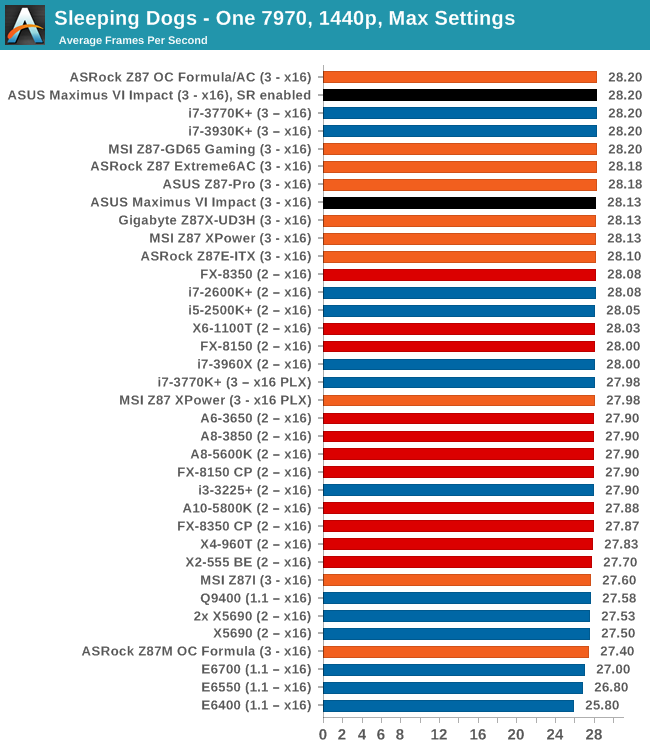
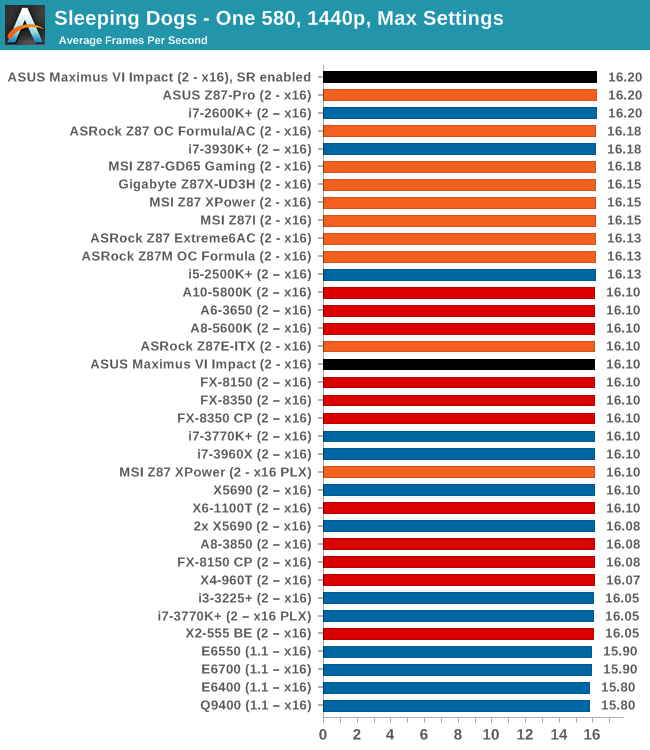



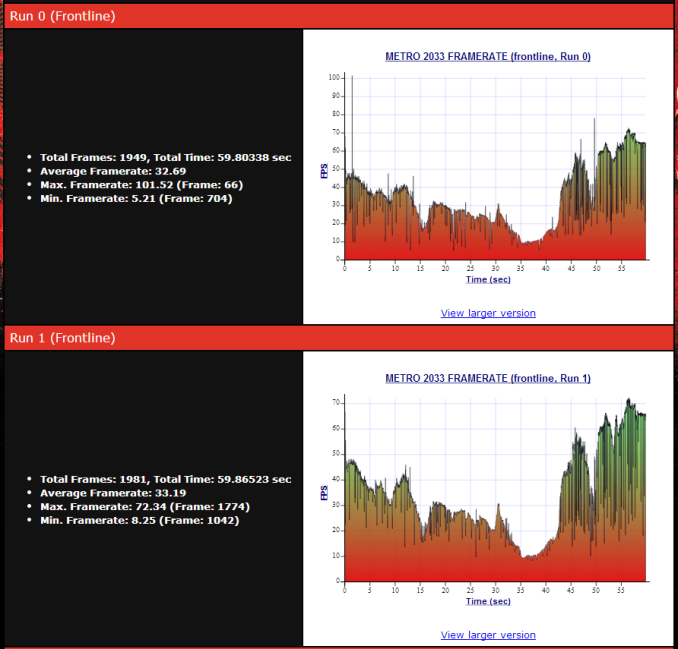








69 Comments
View All Comments
Morawka - Saturday, November 23, 2013 - link
Correction, Brian does all the phone reviews (except apple phones). The only tablet review anand has done recently is surface pro and rtswizeus - Friday, November 22, 2013 - link
No Audio benchmark ?IanCutress - Friday, November 22, 2013 - link
Top of page 5.1Angelreloaded - Friday, November 22, 2013 - link
Great board, with minor non deal breaking issues. This is great for LAN party setups, or mobile desktop computing where laptops simply won't due. I'd recommend this for DIY Steam Box/HTPC as well.just4U - Friday, November 22, 2013 - link
A very nice board.. and great review. I've been curious about this one.. I am on the fence when it comes to mini itx. I haven't found a case yet that I like enough to buy.. there are some good ones out there but they all seem like micro atx cases or bigger..nmm - Friday, November 22, 2013 - link
You probably haven't noticed the EVGA Hadron if you're saying something like this.extide - Friday, November 22, 2013 - link
Did you see the NCASE M1? I know they aren't technically for sale anymore, but I'm sure some will be on ebay...epsilonparadox - Monday, November 25, 2013 - link
You should look into the Elite 130, a much improved version of the elite 120.psuedonymous - Friday, November 22, 2013 - link
Is Asus Secure Erase implementation just a general issuer of ATA SECURE ERASE, or is it keyed just for specific drive controllers (they must call it 'SSD' secure erase for a specific reason).Having to Secure Erase a lot of drives on a regular basis, Parted Magic is by far the easiest way for laptops and workstations that don't have it built in to the BIOS (which thankfully many now do). Boot it from USB, click 'erase drive', then follow the prompts.
extide - Friday, November 22, 2013 - link
I would expect it to be ATA SECURE ERASE